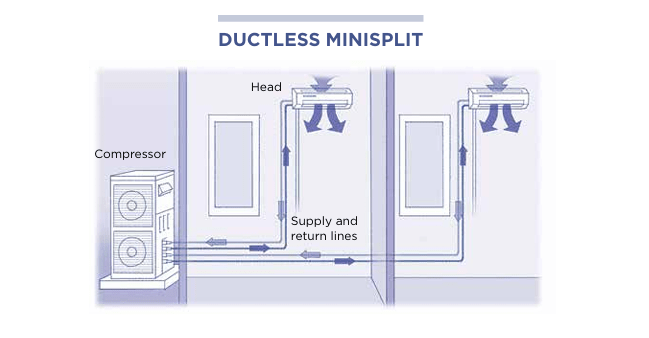Mini split systems provide efficient heating and cooling while eliminating costly ductwork losses.
Why Mini Split Systems Are Different
Traditional HVAC systems rely on ducts, but ducts are prone to leaks, poor insulation, and energy waste. In some homes, up to 30% of conditioned air is lost before it even reaches the living space. A mini split system solves this by delivering heating and cooling directly into rooms without ductwork.
How Mini Splits Work
The system includes:
An outdoor compressor
One or more indoor air handlers
A refrigerant line set connecting the two
This straightforward design eliminates the weakest link in traditional systems—ducts. Each indoor unit serves a specific room or zone, giving homeowners precise comfort control.
Efficiency Advantages
No duct leakage – All conditioned air reaches its destination.
Zoned control – Each room can be set to a different temperature.
Better humidity management – Smaller systems run longer cycles, removing moisture more effectively.
Flexible placement – Units can be wall- or ceiling-mounted without invasive construction.
Applications for Different Homes
Small, airtight homes – A single mini split may be enough.
Large homes – Multiple units provide customized control, though at a higher upfront cost.
Multi-split systems – One compressor can serve several indoor units, though efficiency is lower than single one-to-one systems.
Heating and Cooling in One
Mini split systems operate as heat pumps, reversing refrigerant flow to provide both heating and cooling.
In mild climates, they work as standalone systems year-round.
In cold regions, they pair with gas or electric backup heat for reliability.
In mixed climates, they reduce dependence on furnaces while providing efficient cooling.
Drawbacks to Consider
Higher upfront costs when several units are needed.
Reduced efficiency in very cold climates.
Visible indoor units, which some homeowners may find less appealing.
The Growing Case for Mini Splits
Energy-conscious builders increasingly recommend mini split systems because they align with modern efficiency goals. They eliminate waste, lower operating costs, and offer zone-by-zone comfort control.
As homes become more airtight and energy prices rise, mini split systems are emerging as one of the most practical solutions for efficient heating and cooling.
Mini split systems demonstrate that efficiency and comfort don’t require ducts. By delivering air directly where it’s needed, they provide reliable, cost-effective performance for today’s energy-smart homes.
For a full breakdown of HVAC technologies and practical cost-saving approaches, you can find the complete guide available here.
Also read: Value-Engineered HVAC: Smarter Duct Design Costs and Efficiency





